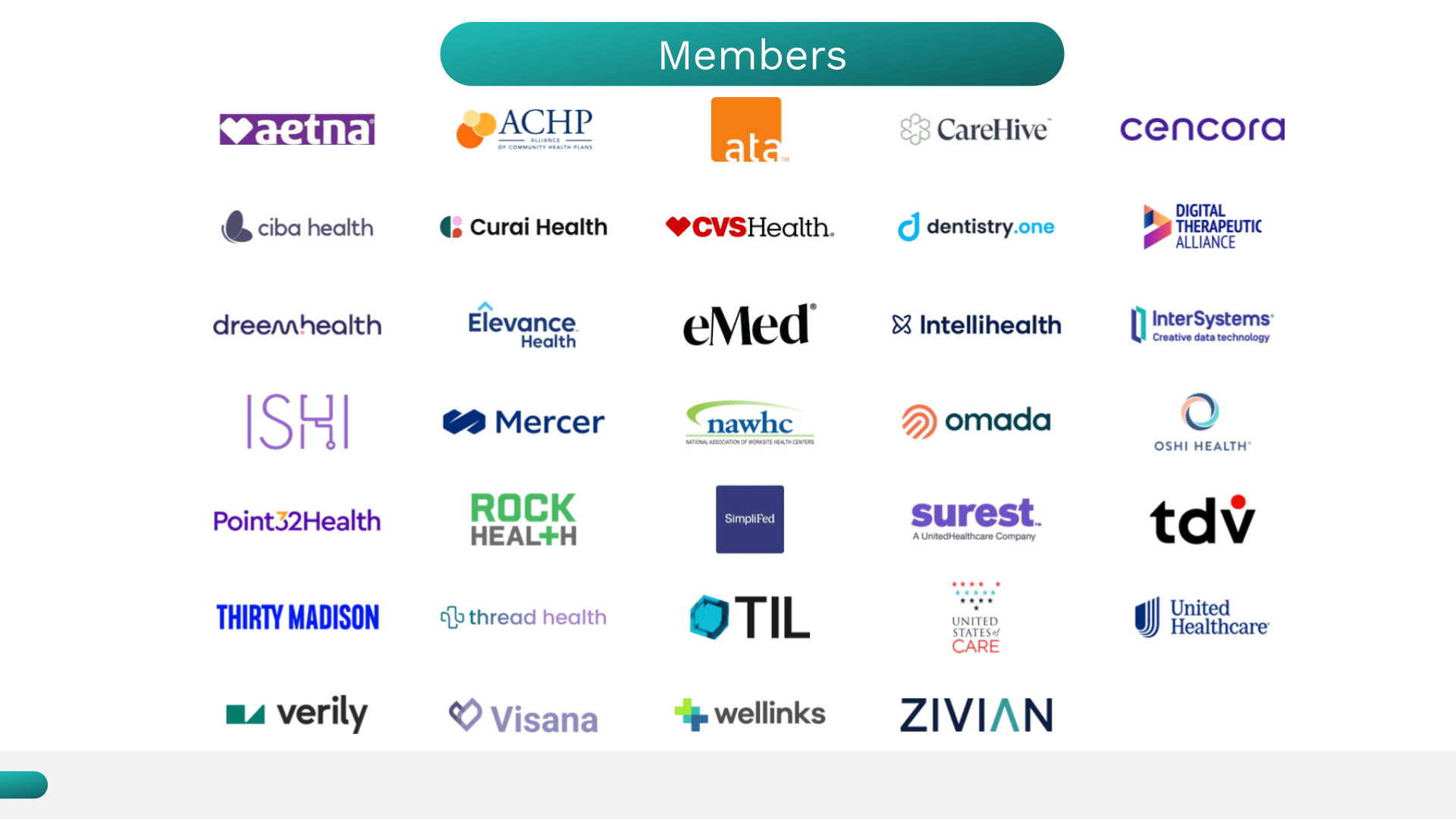
Healthcare is evolving – and health systems need virtual first care (V1C) to keep pace
The healthcare landscape is evolving at an unprecedented pace, driven by new science, innovative technological advancements, and shifting patient expectations. Health systems face a critical shortage of healthcare professionals, compounded by an aging population and an increased demand for chronic and specialty services. As health systems grapple with these increasing demands, there is an urgent need to rethink traditional care models. Enter virtual first care (V1C) – a transformative approach that promises to revolutionize how we deliver and experience healthcare.
The V1C Coalition by the Digital Medicine Society (DiMe) recognizes the pressing challenges facing health systems today: a critical shortage of healthcare professionals, an aging population, and rising demand for chronic and specialty care. Today, we need to meet patients where they are the most comfortable. And for many, virtual care can be easier to manage and more convenient than in-person care.
Are you part of a health system that has yet to adopt virtual care into your practice? Now more than ever, you must assess and enhance your virtual care strategies to effectively reach more patients and improve the overall care journey.
Identify opportunities
If you’re considering adopting virtual care into your practice, one of the first steps is identifying opportunities for integrating V1C. Existing clinical workflows and infrastructure must be evaluated to pinpoint areas where virtual care can address pain points and align with organizational objectives. For example, V1C can alleviate provider burnout by enabling healthcare professionals to manage larger patient panels more efficiently. It also enhances patient engagement by offering continuous, patient-centered care integrated into their everyday lives. From a financial standpoint, V1C offers the opportunity to enable a more strategic revenue stream mix, partnering with cost-efficient V1C providers for routine care services, leaving hospitals with an increased capacity to meet demands for more intensive procedures.
You can leverage V1C to provide timely, high-quality care, meeting patients where they are most comfortable – at home, at work, or on the go. This omnichannel approach to care delivery improves patient satisfaction and optimizes resource allocation, ensuring that care team members operate at the top of their license. By strategically identifying and implementing V1C opportunities, you can position your health system to serve their communities better and achieve better health outcomes.
Assess your readiness
To successfully shift towards virtual first care models, like Ciba Health, a V1C Coalition member, and adopt virtual care into practice, you must evaluate and enhance your readiness for V1C implementation. Investing in scalable IT infrastructure, developing structured training programs for clinicians, and establishing robust security protocols to protect patient data are some of the most significant steps in preparing for a V1C adoption.
By exploring reimbursement models, such as value-based care and bundled payments, you can diversify revenue streams and optimize financial outcomes. By adopting innovative payment models, health systems can mitigate costs and ensure sustainable V1C implementation.
Build strong networks and partnerships
V1C enables health systems to strengthen their networks and partnerships, ensuring patients can receive comprehensive care within the network, thus reducing out-of-network leakage and supporting continuity of care. Productive relationships with V1C providers, technology companies, payors, and other healthcare organizations are crucial for expanding V1C capabilities, enhancing care coordination, and maximizing operational and clinical outcomes.
By collaborating with leading V1C organizations, you’ll stay ahead of the curve and leverage the latest advancements in virtual care. Additionally, strong partnerships will enable you to retain patients within their network by offering seamless, accessible care options. This strengthens patient loyalty and supports population health management by facilitating proactive and preventive care, reducing hospital readmissions, and improving overall health outcomes.
The healthcare industry is positioned to adopt innovative approaches to meet growing demands and improve patient care. V1C offers a scalable, effective solution to these challenges, providing health systems with the tools they need to deliver high-quality, patient-centered care.
By embracing V1C, health systems can optimize resource allocation, diversify revenue streams, and ultimately, better serve their communities. As we move towards a future where V1C is synonymous with efficiency, effectiveness, and exceptional patient outcomes, the time is now for health systems to integrate virtual care into their strategies. The V1C Coalition by DiMe stands ready to support your transformation, providing the necessary resources, expertise, and support to kickstart your virtual care journey. Let’s work together to shape the future of healthcare–one where every patient has access to the care they need, when and where they need it.
Learn more about excelling in V1C and achieve impactful results
Sign up here to learn more about the V1C Coalition and hear about new, free resources to support your success as they are made available.

